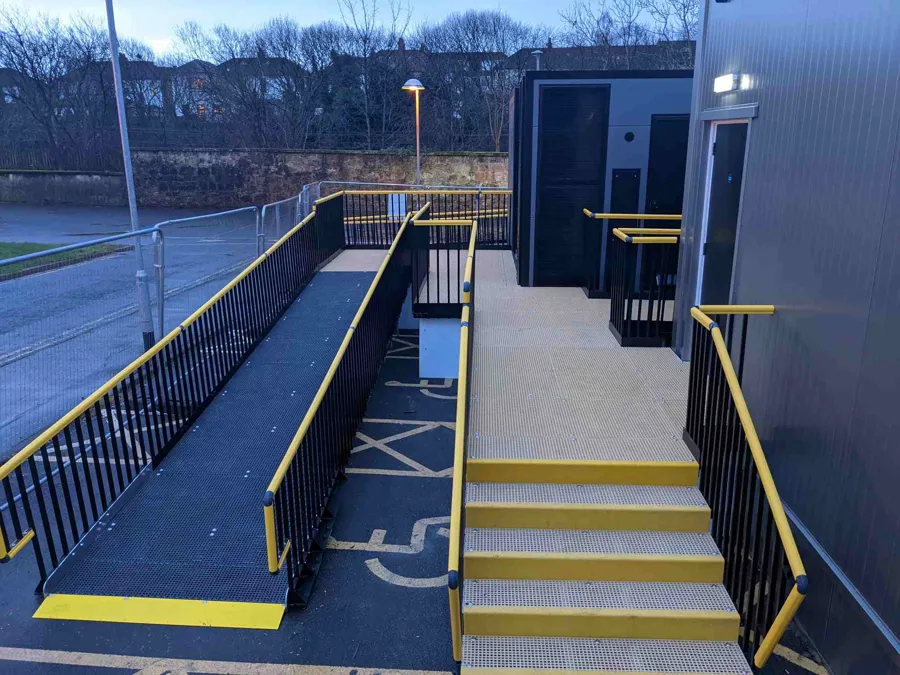
You are visiting the United Kingdom Kee Safety website from United States. Would you like to go to the United States site?
Under equality legislation, all public buildings and businesses in the UK are legally required to make ‘reasonable adjustments’ to remove physical barriers and ensure equal access to their premises for people with disabilities or reduced mobility.
All adjustments - from changes to building layout or accessibility aids - should be ‘anticipatory’, meaning they should be in place before they are needed. Business owners cannot wait until the lack of adjustments is highlighted before taking action.
The legislation that dictates equal access is the Equality Act 2010, which replaced the Disability Discrimination Act (DDA). Although the Equality Act superseded the previous Act, you might still see systems designed to ensure equal access referred to as ‘DDA compliant’.
Despite this legislation, research by Disability Charity Purple has found that four in five disabled customers say businesses could ‘do more to be accessible’, and that businesses could be losing millions of pounds each year by not being accessible to the 13 million people in the UK with disabilities.
One of the most straightforward ways for businesses to make themselves more accessible to everyone is by installing DDA compliant ramps and DDA handrails, both designed to remove the risks and frustrations posed by non-compliant, inaccessible buildings.

Creating and installing a safe, compliant ramp is more in-depth than just placing a piece of wood or metal up to the doorstep. To be compliant, ramps must be designed, tested, and built properly to ensure the safety of users and others accessing the building.
When purchasing a ramp, you generally have two options:
Permanent or semi-permanent disabled access systems used in public spaces must comply with Building Regulations Document Part M, BS8300 and the National Planning Framework. There are fewer restrictions for portable ramps but these should still be designed and tested thoroughly before use.
Whatever the type of ramp you choose, it must adhere to the following to meet equality legislation:
You might also consider additional safety features, such as yellow treads or brightly coloured handrails for those with minimal vision.
The Equality Act 2010 and Building Regulation Approved Document M require that when designing and constructing balustrading and handrailing for commercial and public buildings, reasonable adjustments need to be made to overcome physical barriers which prevent disabled access.
The UK Building Regulations recommend an outside diameter tube size for handrail installations of between 40mm-45mm. The DDA handrails should be between 900mm and 1.1m in height, provide a continuous smooth surface and be `not cold to touch`, and should contrast visually with its surroundings without being highly reflective.
To learn more about handrails for the disabled download our Guide To DDA Compliant Handrails.